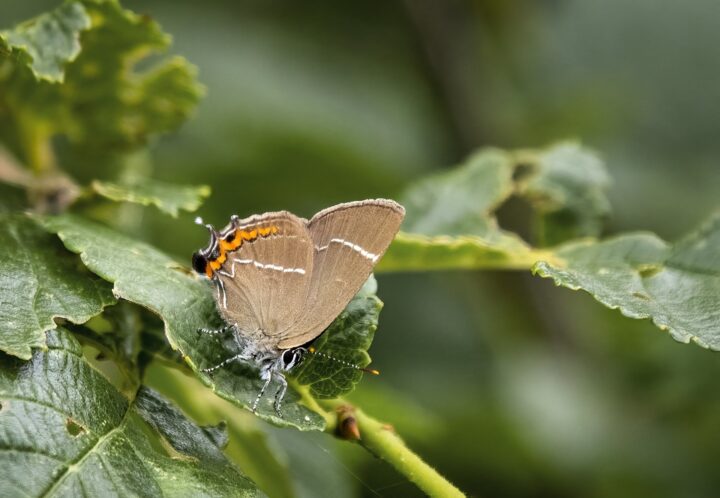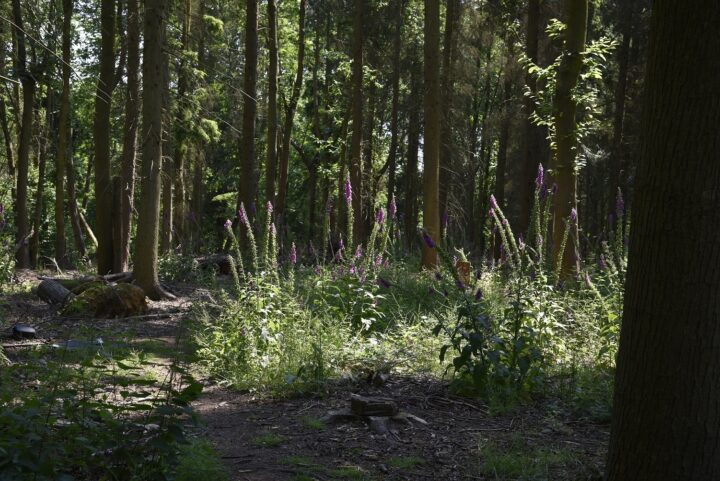Essex Country Parks Landscape Restoration one year on: Summer 2025
We look at what's been achieved at Hadleigh, Thorndon and Weald one year on.

One year on at Hadleigh . . .
New livestock fencing installed
We’ve replaced large sections of old, damaged fencing across the site with new livestock fencing. This allows us to safely graze a variety of heritage animals for conservation purposes. We’ve also added dividing lines to better control where grazing takes place, helping us target specific areas for ecological benefit.
Butterfly habitat protection zone
As part of the fencing work, we’ve created a special enclosure to protect elm trees, vital for the white-letter hairstreak butterfly, a UK conservation priority species that breeds only in Elm trees.
Restoring lost grassland
Over winter we cleared dense scrub from an area that was once valuable grassland habitat. This restoration is crucial for rare species and aligns with our Site of Special Scientific Interest (SSSI) responsibilities. A strip of scrub was retained to provide shelter and structure to the habitat.
While the area may look bare now, wildflowers like bird’s-foot trefoil, essential for common blue butterfly caterpillars, are already emerging.
Managing buzzing grassland
Cheviot goats help manage low scrub that would otherwise overtake our valuable grasslands. Hadleigh is known for its rare Thames Terrace grassland, which supports species like shrill carder and brown-banded carder bumblebees, mining bees, butterflies, and glow-worms.
Rare plants making a comeback
Thanks to ongoing grassland management, we’re seeing rare plants such as Bithynian vetch and Deptford pink appearing in new areas of the park, a promising sign of thriving grasslands for the future.
Read more about what we're doing and why at Hadleigh.
Looking forward at Hadleigh
Grassland restoration
Further scrub clearance is planned for September 2025 in a new area of the site at Shipwrights.

One year on at Thorndon . . .
New fencing to support biodiversity
15 kilometres of new and replacement fencing were installed during Winter 2024 and Spring 2025 to support natural land management at Thorndon Country Park.
More areas of the park will now be grazed by sheep for more of the year (when required) which will lead to an increase in the variety and numbers of wildflowers, butterflies and invertebrates in these areas.
Scrub control for conservation
Grazing goats will help to control scrub, particularly as part of our important wood pasture restoration at the site.
Wood pasture is important for mammals such as bats and birds, voles, weasels, insects and butterflies including the silver washed fritillary and mompha langiella moth, which is declining locally.
Scrub management at Church Field, where areas are cut on an eight-year rotation, will also support birds and invertebrates. A nightingale was heard singing here this year.
Better access for all
New track has been installed which will improve year-round access for visitors and be used for timber extraction in the future.
Work is continuing to make good areas impacted by machinery and wet weather earlier in the year.
Read more about what we’re doing at Thorndon and why.
Looking forward at Thorndon
Wood pasture restoration
From the end of August wood pasture restoration will start in the Menagerie at Thorndon South. Part of the South car park will be closed to allow this work to take place.
Woodland management
Woodland management work will take place in the conifer planation in Barrack Wood.
Grassland restoration
In early Autumn 2025 ‘Sward enhancement’ is planned for four fields which are under restoration to species rich grassland. This means green hay spreading and/or seeding to support lowland meadows species.

One Year on at Weald . . .
Wonderful woodland works
Woodland management during Winter 2024 and Spring 2025 in the Forest has reduced fast growing and invasive trees so that those left can grow to their full potential. Bird life will start to recover here as the thinned areas mean they can pass through more easily.
Wildflowers for the future
We'll start to see real changes in this area in spring 2026. Wildflowers, including native bluebells and foxgloves, will benefit from the increased light and space on the woodland floor. Openings in the trees will enable visitors to enjoy beautiful scenes from the paths.
Supporting rich grasslands
New and replacement livestock fencing has been installed in areas of the park as part of our ambitious grassland restoration programme.
Red Poll cattle will graze more widely at Weald, bringing multiple benefits. Wildflowers, bees and butterflies and invertebrates should start to increase and flourish in the newly grazed areas.
Read more about what we’re doing at Weald and why.
Looking forward at Weald
Grassland restoration
In late summer 2025 Red Poll cattle will graze the Lodge Field and water supply for the cattle will be installed.
Woodland works
During autumn and winter 2025 and into spring 2026 further woodland management and veteran tree works will take place